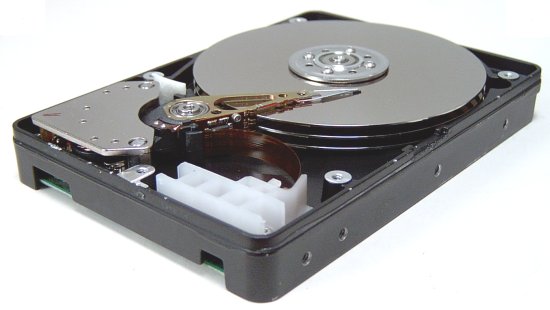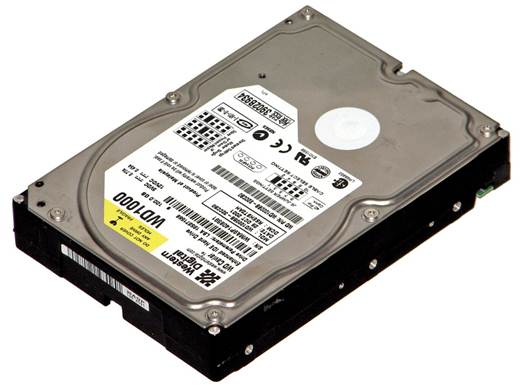What’s the difference between a good
hard drive and a great hard drive?
If there’s one thing computers never seem
to have enough of, it’s storage space. High-definition media, high-storage
optical discs and faster broadband speeds mean that it’s easier than ever to
fill up your hard drive. Luckily, it’s also cheaper than ever to get a bigger
hard drive.
Hard disk drives are currently bigger and
better value than at any point since their creation, and that makes buying one
relatively easy. Any hard drive you buy today ¡s almost certain to eclipse your
current storage device in terms of capacity and speed, and it’ll probably cost
less while doing so. For that reason, you might be tempted to think that not a
lot of thought needs to go into buying a hard drive.

Hard
disk drives are currently bigger and better value than at any point since their
creation, and that makes buying one relatively easy.
Obviously, if that were the case, we
wouldn’t have much of an article for you. But here’s the thing: there’s a big
difference between buying a good hard drive and buying a great one. If you want
to make sure you don’t get lumbered with outdated, under-performing hardware,
follow our advice so that you can pick the right device with the right specs.
“Don’t think that a smaller drive would
cost you any less”
Just so there’s no confusion, we’re only
going to cover internal hard disk drives here. We’ve already done solid-state
drives (sorry if you missed it!). And external hard disk drives will get their
own guide in due course. As it is, internal hard drives may not be the fastest
storage medium, nor the most portable, but in terms of all-round practicality
and popularity they’re still the industry’s favourite.
So settle in, and by the end of this
article you should know for certain what you’re looking for in an internal hard
drive and, perhaps more importantly, what to avoid...
How Much Should You Spend?
At the moment, you can buy a fairly
serviceable 160GB hard drive for as little as US$52.5. If you’ve had your
computer for a few years, this might seem like a ridiculously large amount of
space, particularly if you’re only a light or casual PC user. You might also
think that you could actually live with even much less space than that, if it
means you’re able to pay a lower price.
However, don’t think that a smaller drive
would cost you any less. It’s tough for manufacturers and retailers to go any
cheaper than $52.5 on an internal hard drive, because the constant improvements
in hard drive technology makes it so much cheaper and easier to pack in drive
capacity that they have reached the point where it becomes economically
unviable to make a drive any smaller.

However,
don’t think that a smaller drive would cost you any less.
Let’s assume, though, that you’re
interested in something other than the bare minimum. Hard drives tend to become
better value the more you spend on them. Using Seagate drives as a barometer,
you can get a 250GB hard drive for around $67.5, a 500GB one for a mere $75,
and despite having four times the capacity of that, a two terabyte drive can be
bought for as little as $120.
The lesson, then, is to spend as much as
you can afford when buying a new hard drive, because the storage capacity
doesn’t determine the price so much as the technology and workings that
underpin it. However, that said, there is an upper limit you should keep in
mind. The most expensive 2TB hard drives cost around US$600, and although such
drives can offer faster speeds, hybrid SSD storage, better reliability and
other extra features such as built-in encryption, they’re designed for
specialist use. If you’re a home PC user with no other needs, you should be
able to get the hard drive you want by spending between US$75 and US$150.
Certainly, if you don’t know you have a
good reason to do so, you shouldn’t spend any more than US$225 on an internal
hard drive. As with any component, it’s tempting to buy extra features in the
hope they’ll pay off long-term, but remember that hard drives don’t last more
than a few years under normal use, so only pay for the features you need in the
immediate to mid-term.
What Make/Model/Manufacturer Should
You Look For?
There are plenty of hard drive
manufacturers to choose from, but the differences from one to the next are
generally minor in terms of actual technology. What matters most is build
quality. As components, hard drives are particularly prone to failure, so the
reliability offered by a well-known manufacturer is one way of ensuring you
don’t get stung. Warranties are all well and good, but they don’t bring back
lost data.
The best-reviewed manufacturers are
typically Seagate and Western Digital, so don’t be afraid to pay a little more
for a drive created by one of those companies. Both have a selection of product
lines, which offer different degrees of speed and fidelity, so here we’ll
explain the difference between them.

Warranties
are all well and good, but they don’t bring back lost data.
If you choose a Seagate drive, you will
almost certainly want to buy from the Seagate Barracuda range, which is the
company’s line of standard 3.5” internal hard drives. There are other drives
available, but these should be avoided unless you’re building a PC which fits
into one of the specific categories they’re aimed at.
Seagate Momentus drives, for example, are
thin, low-power 2.5” drives intended for use in notebook PCs. They’re cheaper
than Barracudas but also slower. Seagate Pipeline drives are designed for use
in media centre PCs, and are optimised for quiet and low-power running. This
makes them cost more than Barracudas, but they actually run a little slower and
have poor random access times.
The most expensive Seagate drives are in
the Seagate
Constellation line which offer
enterprise-level storage with self-encrypting storage, high-capacity platters
and high integrity components to reduce the chance of failure or error. As
suggested earlier, these are unnecessary features for home use.
For Western Digital, you should pay
attention to the colour ratings of the drives. Any drive marked ‘blue’ is a
medium-power, medium-performance drive, while drives named ‘black’ are
high-power, high performance, and have a warranty period of five years instead
of three like other Western Digital drives. ‘Green’ drives are, as the name
suggests, engineered for low-power running, but they sacrifice speed and
performance in favour of energy efficiency and cool running.
You may also see names such as ‘Caviar’ and
‘Scorpio’ applied to Western Digital drives, but all that denotes in practical
terms is whether they’re 3.5” (desktop) or 2.5” (notebook) models respectively.
Note that although Caviar Black drives are high-speed/ high-performance,
they’re still within the range that the Seagate Barracuda covers, and not the equivalent
of the Seagate Constellation or other specialist drives. For that reason, we
recommend that any non-specialist user buying a Western Digital drive consider
both Caviar Blue and Caviar Black.